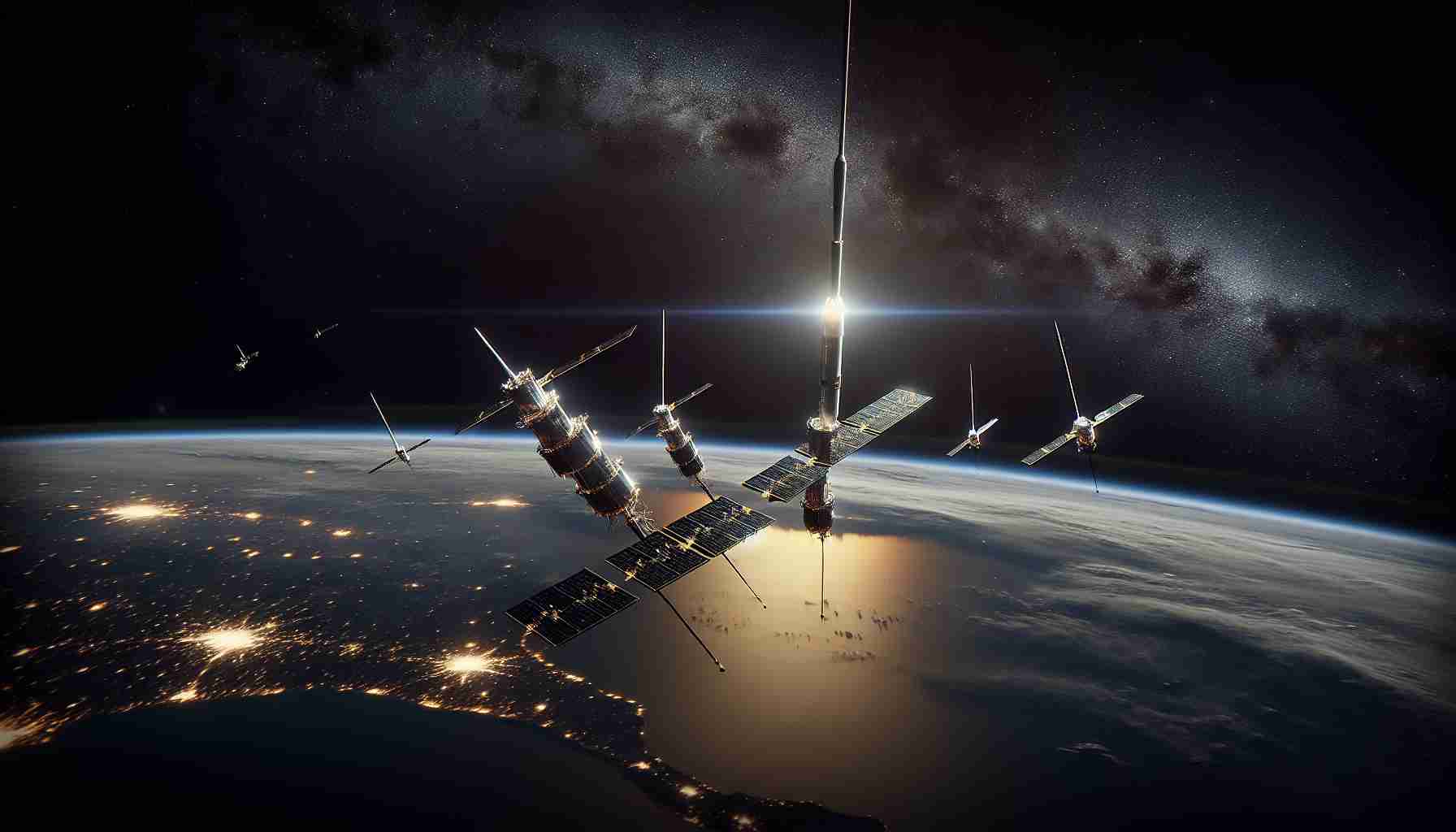- SpaceX launched 24 new Starlink satellites, aiming to revolutionize global internet access.
- The Falcon 9 rocket’s success highlights advancements in rocket reusability.
- Introducing Direct-to-Cell capabilities, enabling mobile devices to connect directly to satellites for uninterrupted connectivity.
- The project expands high-speed internet to over 100 countries, targeting remote and underserved areas.
- The increasing number of satellites raises concerns about space debris and access costs.
- SpaceX challenges traditional telecom giants, pushing towards limitless global connectivity.
- Issues of security and sustainability require careful consideration as global communication evolves.
SpaceX has set the tech world abuzz by launching 24 new Starlink satellites, further its quest to revolutionize global internet access. Just as the sun rose over Cape Canaveral, Florida, the Falcon 9 rocket soared skyward, casting a brilliant streak across the sky and reinforcing SpaceX’s dominance in space technology.
This pivotal mission, named Starlink 6-70, signifies more than just another satellite deployment; it’s a giant leap towards providing high-speed internet to every corner of the globe. The Falcon 9’s repeated triumph highlights SpaceX’s groundbreaking strides in rocket reusability—returning smoothly to a droneship in the Atlantic Ocean after its 24th launch.
The latest additions to the Starlink constellation promise a bold new era of connectivity. With these satellites, SpaceX introduces Direct-to-Cell capabilities, a game-changing feature allowing mobile devices to link directly to the satellites. This paves the way for uninterrupted streaming, video calls, and gaming, even in the most isolated terrains, redefining how we connect in today’s digital age.
By expanding to over 100 countries, the project aims to extend high-quality internet to remote and underserved regions, reshaping the digital landscape. However, this considerable advancement invites scrutiny, as growing satellite numbers spark debates about space debris and the costs of access.
SpaceX’s relentless innovation keeps them ahead, challenging traditional telecom giants and carving out a future where connectivity knows no bounds. But as the world moves closer to seamless global communication, questions of security and sustainability linger, calling for careful navigation of this uncharted frontier.
In essence, SpaceX’s latest Starlink initiative heralds a transformative era in global communications, bringing the once unreachable within grasp and setting the stage for a connected world.
Unlocking SpaceX’s Starlink: Game-Changer or Perilous Path?
How does SpaceX’s Starlink Direct-to-Cell technology change connectivity?
SpaceX’s Direct-to-Cell technology is revolutionizing connectivity by allowing mobile devices to connect directly with satellites, eliminating the need for traditional cell towers. This innovation enables seamless internet access for streaming, video calls, and gaming in remote areas where traditional cell networks are unreliable or unavailable. By bypassing ground-based infrastructure, Direct-to-Cell opens up new possibilities for connectivity, especially vital for emergency services and remote communities.
What impact will Starlink’s expansion have on global internet coverage?
The continuous expansion of the Starlink satellite constellation promises to dramatically increase global internet coverage. Targeting over 100 countries, Starlink aims to provide high-speed internet to underserved and remote regions. This could bridge the digital divide, offering educational resources, business opportunities, and healthcare services to isolated communities. However, the ambitious scope of this expansion also raises concerns about affordability and the cost implications for consumers worldwide.
What are the challenges and controversies surrounding SpaceX’s Starlink initiative?
While Starlink promises unprecedented connectivity, several challenges and controversies accompany its growth. As the number of satellites in orbit increases, concerns about space debris and potential collisions escalate. Regulatory scrutiny over frequency interference and light pollution from the satellite’s reflections also persists. Additionally, the sustainability of such rapid expansion is questioned, necessitating international cooperation and responsible management.
Links to Learn More
– For an in-depth look at SpaceX and its missions, visit the SpaceX website.
– Discover the impact of satellite internet technology with Starlink by SpaceX.
Conclusion
SpaceX’s Starlink initiative ushers in a transformative communication era, aiming for a world where connectivity is universally accessible. However, navigating challenges like space debris, regulatory hurdles, and environmental implications will be crucial for sustainable growth. As we stand on the brink of a new digital frontier, the balance between innovation and responsibility will shape the future of global connectivity.







